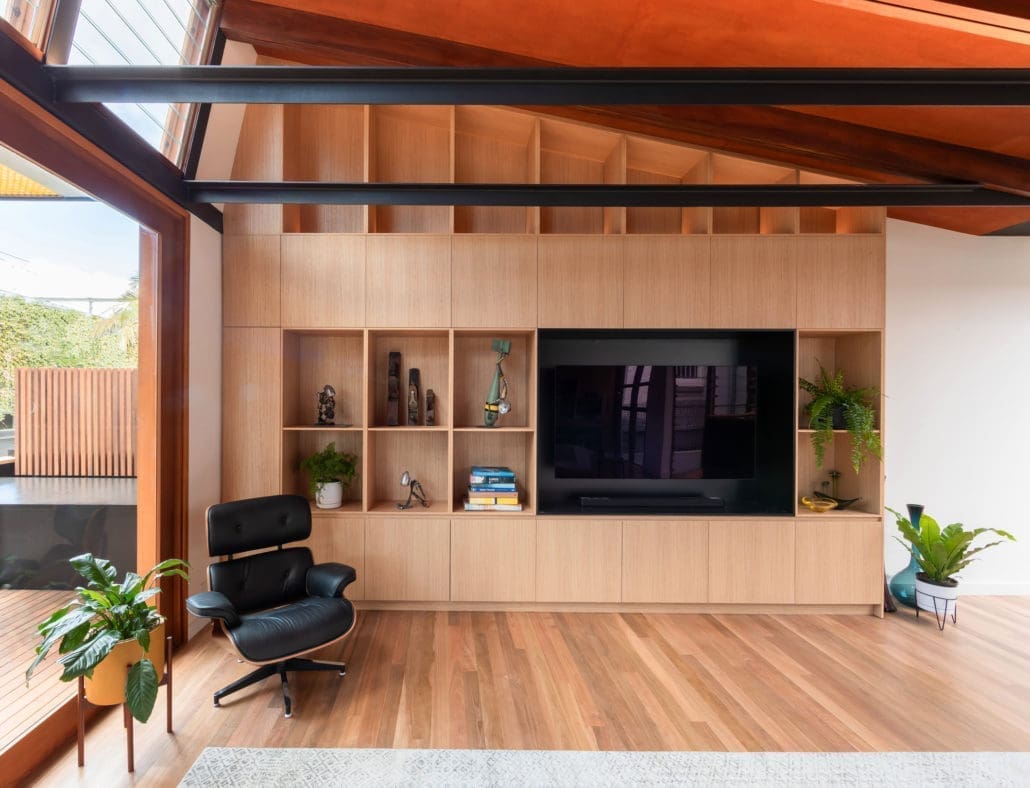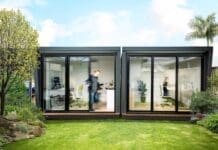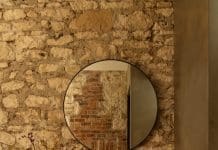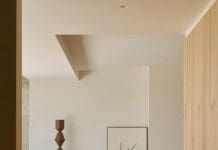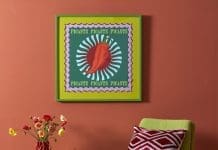At street-view, it appears to be your typical terrace home. And yet what’s hidden behind is a modern, spacious, open-plan extension of architectural elegance. Come inside and explore the beauty and interest that is Strawberry House.
Related article: Step inside Ocean House: A secluded cliffside architectural home
Related article: Bathed in light and style — the bespoke interior of Double Void House

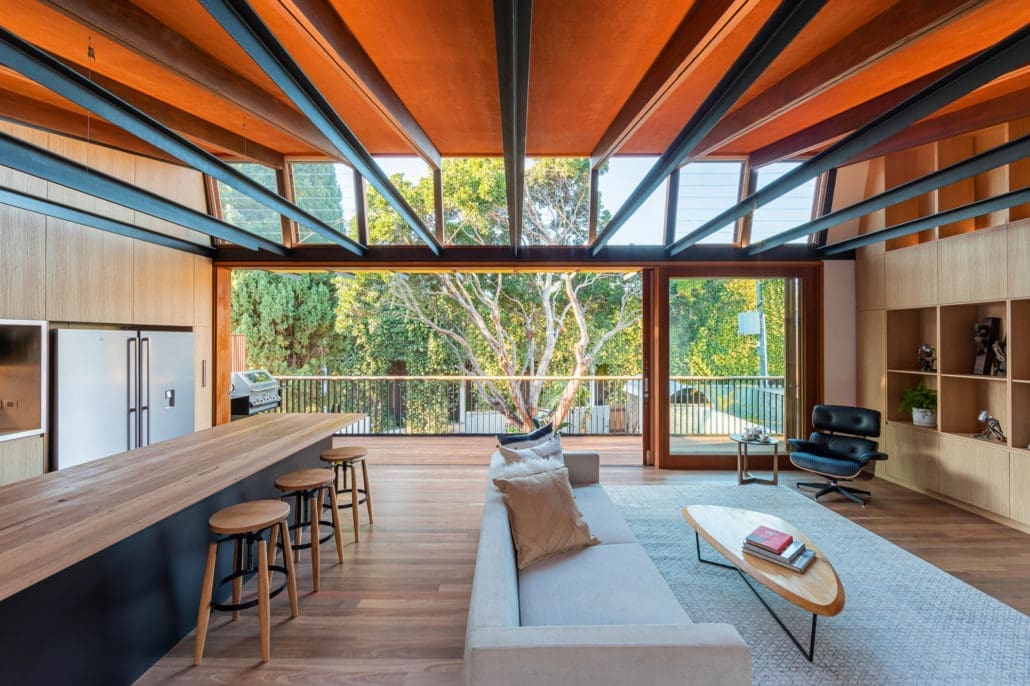
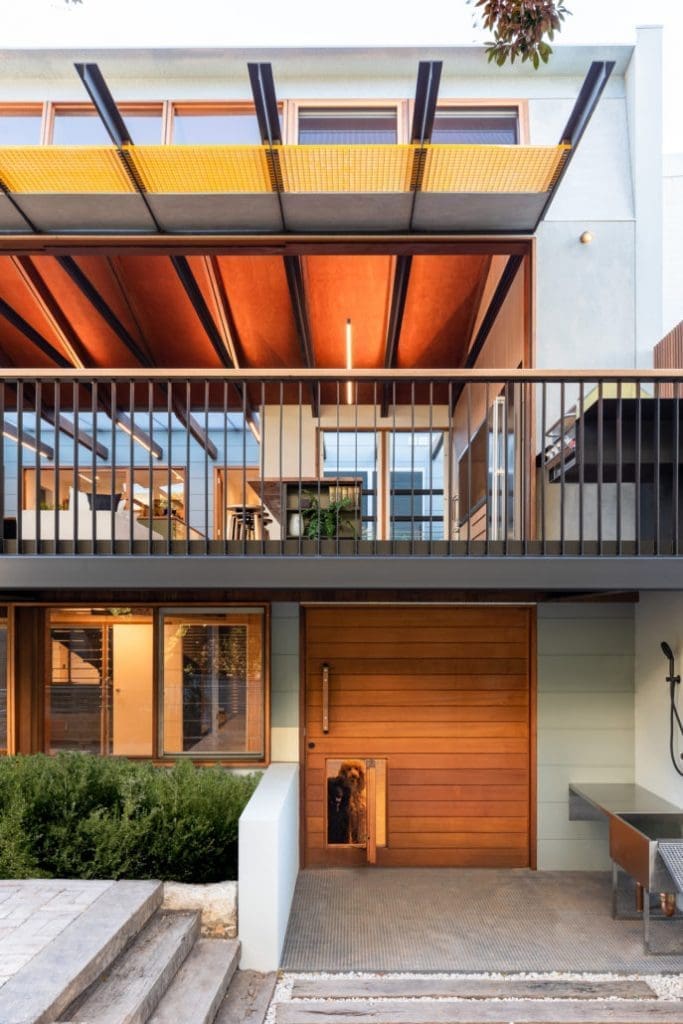
Home to a family of 3 plus 2 beloved labradoodles, Strawberry House was a unique project with many twists and turns.
“Located in an inner-city suburb of Sydney, the original property was a small, cramped 4 bedroom house,” explains lead architect Clinton Cole from CplusC Architectural Workshop.
“It was made up of 2 interconnecting terraces, purchased by the owners in the 1980s. It sits tucked amongst the other terrace homes and backs onto a quiet laneway.
The home owners had outgrown the original configuration which they found non-conducive to their lifestyle in retirement. They came to us with a brief which was simple in nature but difficult in design.
“The owners wanted to create a bespoke home, but retain the original features of the front façade. They loved the 2 united terraces, allowing more natural light and ventilation into the narrow, dark and cramped house.
“Furthermore, they requested an internal lift to allow access between levels, a built-in dog-washing station and the retention and restoration of the original backyard ‘dunny’.”
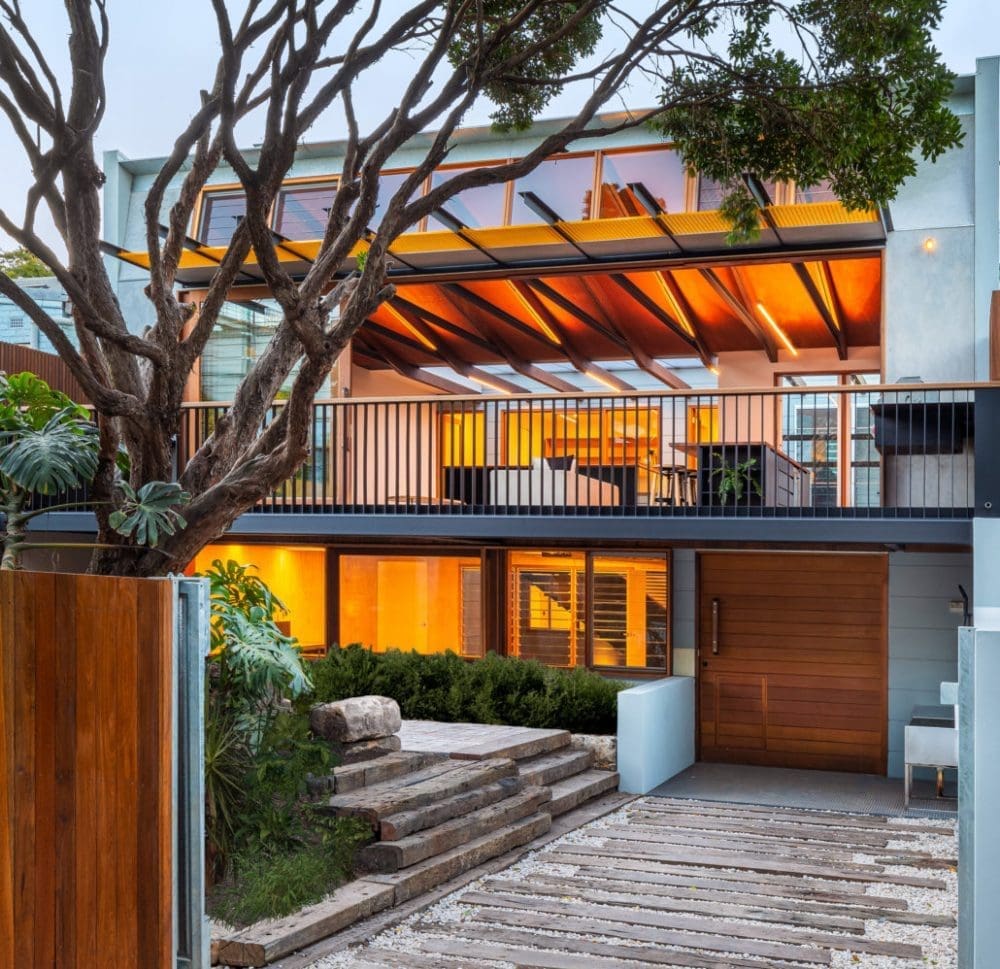
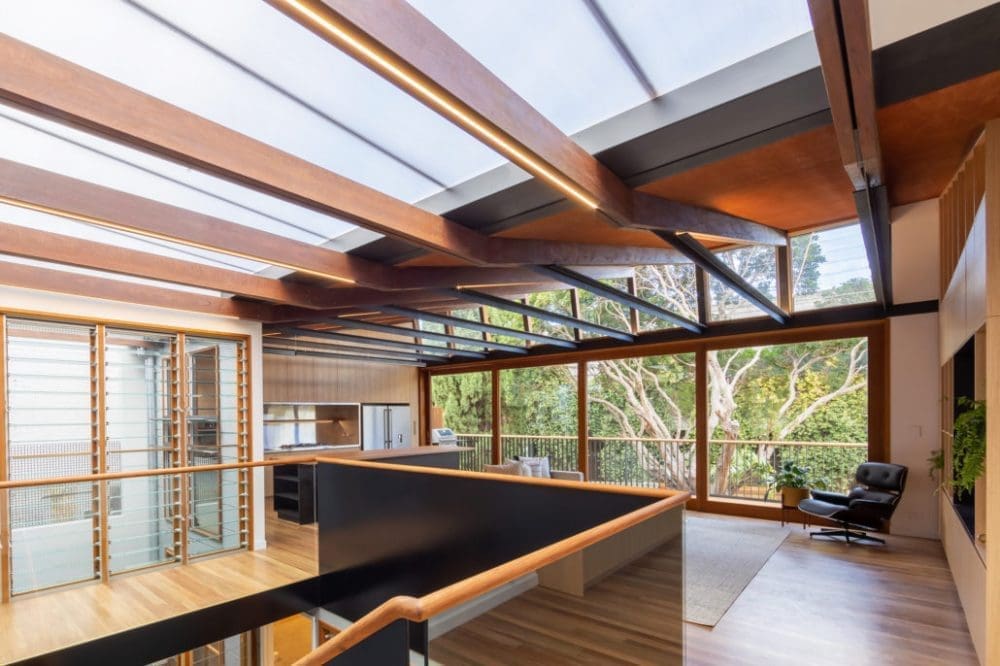
Christened Strawberry House, thanks to a tree planted 40 years ago, it proved to be quite the challenge during this project!
“The name Strawberry House derives from the original Irish strawberry tree, planted by our clients about 40 years ago. They planted it in the backyard when they first purchased the houses.
“It’s actually considered a noxious weed in most of the country… but not in the city of Sydney. It was a bit problematic for us as its location was dead centre of the two properties. This restricted any rear lane development on the properties and forced the design of the home away from the tree.
“Although it was an unfortunate situation, it was central to informing a positive achievement in the creation of our clients forever home, with the Irish strawberry tree being central in its location.”

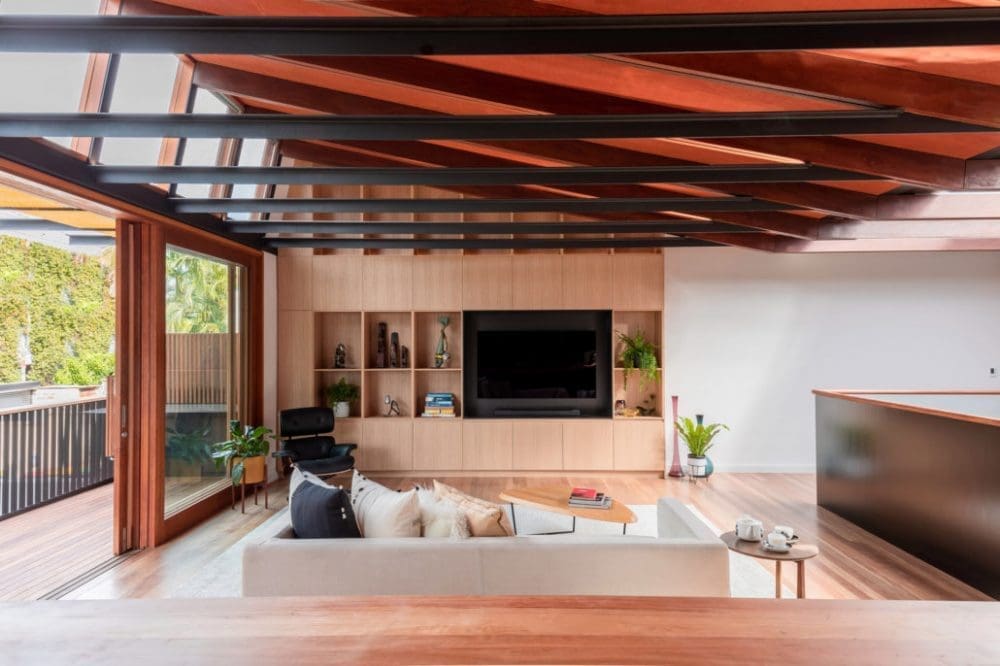
With its breezy, open plan design, Strawberry House continues to surprise with unique features such as the linear beam lighting.
“The new design is a tri-level home. The ground level has a significant home workshop, designed to house our clients extensive collection of hobby and craft equipment,” explains Clinton.
“The doggy-door is an interesting feature which the we (and the owners beloved dogs) really love! It’s nestled in the gorgeous pivot door, made from western red cedar.
“The double internal courtyard is pretty special too. One is open to the sky, the other covered by translucent roofing. They flood the house with light, fresh air, and create a connection to landscaping, regardless of the weather.
“When it came to lighting the main living space, we wanted to avoid the overuse of downlights. In consultation with lighting experts, we were able to create a warm sense of ambient lighting in the kitchen. The result was an LED-strip lighting scheme, integrated into the linear beams.
“These lights have been optimised to suit the angled ceiling and reflect diffused light off the timber ceiling to evenly light the open living and kitchen space.”

Keeping the traditional façade was an important factor to the Strawberry House renovation.
“To impeccably restore the front façade, we engaged with rare, specialist traditional trades. These specialist trades are quite hard to find as we use traditional building methods less and less.
“The project included full restoration of the traditional counterweight double hung windows. Also, the exposure of the original dry-pressed brickwork and re-establishment of the original cast iron fence and entryway gates.
“Unfortunately, these cast iron fences are often ripped out and replaced with aluminium replicas. This is solely based on architects and builders not having access or relationships with these specialist trades people. It’s such a shame to lose such beautiful traditions on our homes.
“There’s another hidden feature which you may not expect in a traditional-looking townhouse. We installed 10kWh solar panels and 52kWh battery storage. This means the electrical meter runs in reverse to such an extent that the electricity provider disconnects the input to the grid. Our clients pay no bills!”
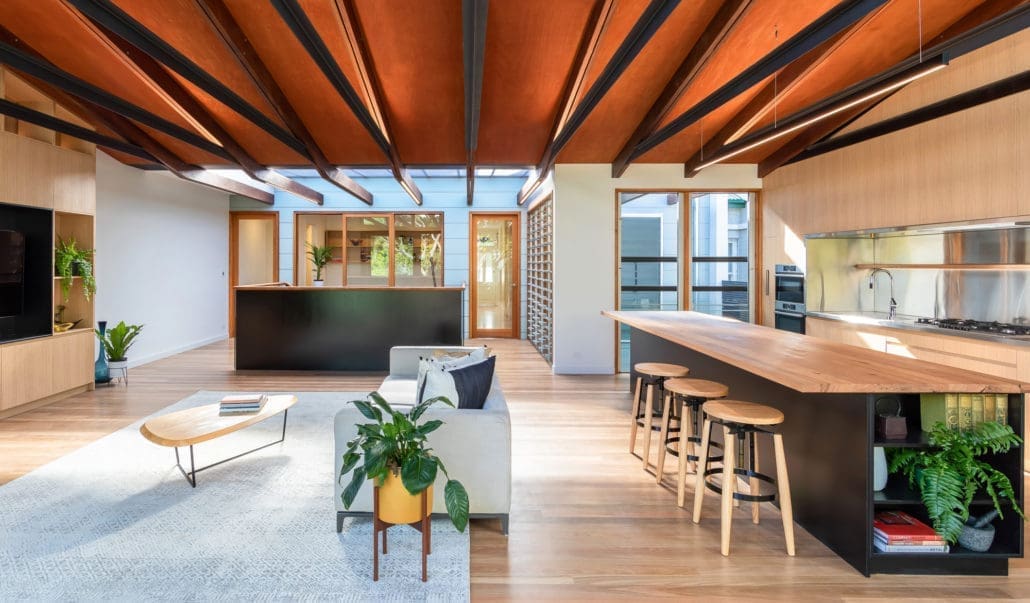
Imagery from Michael Lassman Photography
We loved taking a look around the wonderfully unique Strawberry House. To view more projects from CplusC Architectural Workshop, be sure to check out their website. You can also keep up to date by following their Instagram page.
More home tours here
